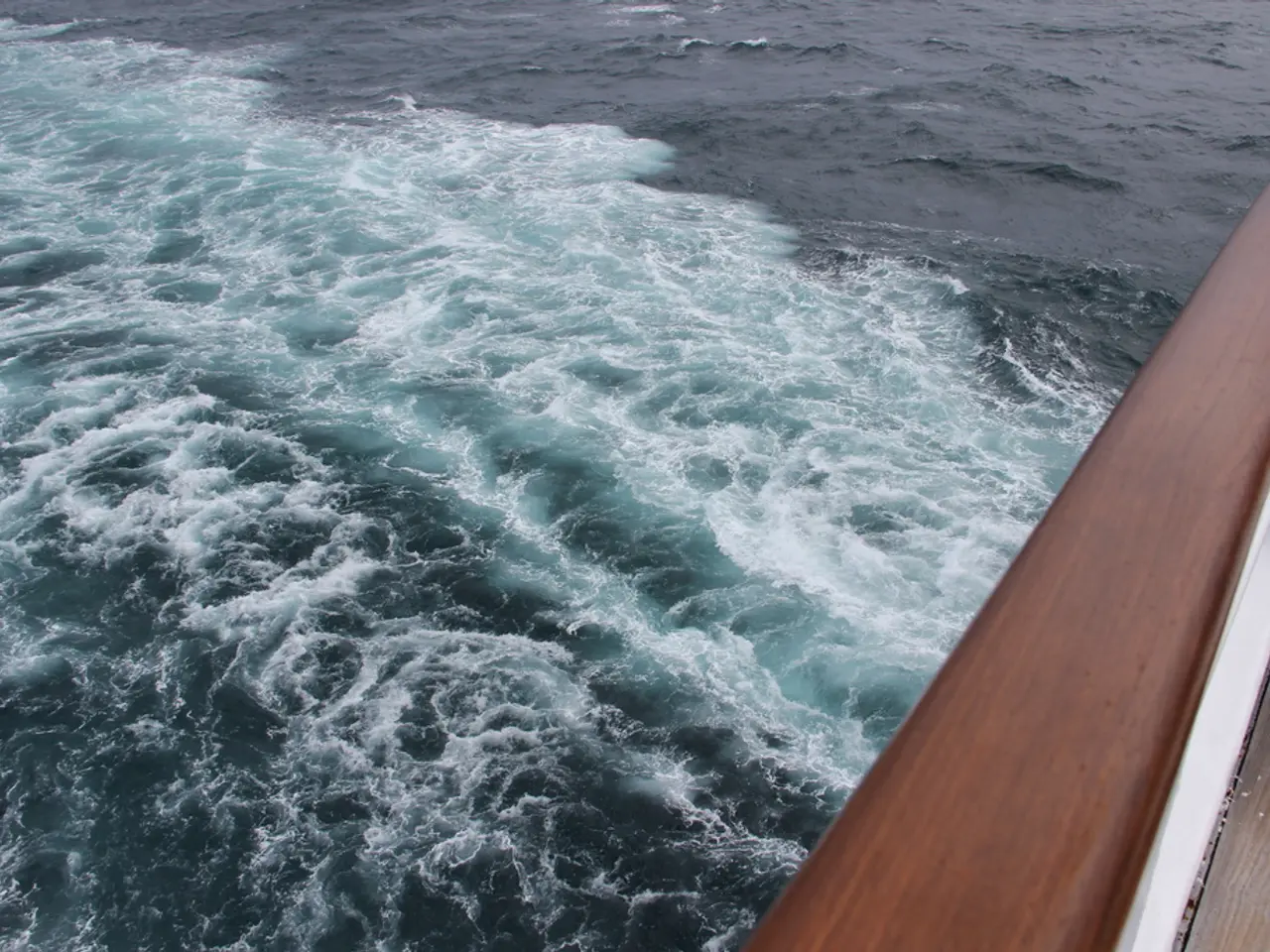Experts in North Carolina potentially discovered the remnants of the notorious Spanish privateer vessel, 'La Fortuna'.
In a significant archaeological find, the wreckage of the Spanish privateer La Fortuna has likely been rediscovered off the North Carolina coast by researchers from East Carolina University (ECU). The ship, which exploded and sank in 1748 after attacking the colonial town of Brunswick, is now identified by a group of 47 timbers showing wood consistent with 18th-century Spanish Caribbean sources [1][2][4][5].
Historically, La Fortuna participated in raids during King George’s War, notably attacking Brunswick Town on September 3, 1748. The locals quickly counterattacked, and during the fight, La Fortuna exploded due to a powder fire, killing most of its crew. This event ended the incursion and preserved its tragic legacy [1][3].
During the summer field school season, the team found ship timbers partially embedded in river mud with evidence of planking barely visible at the surface. Wood samples link the material to Spanish shipbuilding traditions from the Caribbean colonies. The site also yielded remains of three other 18th-century shipwrecks and colonial waterfront features, giving insight into early American colonial ports and maritime commerce [2][4][5].
Visibility in the Cape Fear River is poor, making underwater identification challenging and requiring careful documentation. However, the wrecks provide well-preserved examples of 18th-century naval architecture and colonial-era maritime activity.
The shipwreck remains are vulnerable due to ongoing erosion of the riverbanks and riverbed. Archaeologists emphasize the urgency of recovery and preservation efforts to prevent loss of cultural heritage. The site is considered at risk, and further excavation, documentation, and protective measures will be needed to safeguard the wrecks and associated artifacts [1][5].
The discovery was made accidentally by maritime studies graduate student Cory van Hees while mapping a colonial wharf. More work needs to be done to confirm the early theory that the ship is La Fortuna, but the rediscovery sheds new light on Spanish privateering in the American colonies and colonial maritime trade.
References:
[1] East Carolina University. (2022). ECU archaeologists find possible remnants of Spanish privateer La Fortuna. Retrieved from https://www.ecu.edu/news/2022-09-12/ecu-archaeologists-find-possible-remnants-spanish-privateer-la-fortuna
[2] North Carolina Department of Natural and Cultural Resources. (2022). Spanish privateer La Fortuna found off North Carolina coast? Retrieved from https://www.ncdcr.gov/about/news/spanish-privateer-la-fortuna-found-off-north-carolina-coast
[3] National Park Service. (n.d.). La Fortuna. Retrieved from https://www.nps.gov/nr/travel/colonialnationalparks/la-fortuna.htm
[4] Archaeology in America. (2022). Spanish privateer La Fortuna found off North Carolina coast? Retrieved from https://www.archaeology.org/news/9540-220928-spanish-privateer-la-fortuna-found-off-north-carolina-coast
[5] Science Daily. (2022). Spanish privateer La Fortuna found off North Carolina coast? Retrieved from https://www.sciencedaily.com/releases/2022/09/220912172435.htm
- The rediscovery of La Fortuna, a Spanish privateer from the 18th century, offers significant insights into the history of King George’s War, archaeology, and maritime commerce.
- Science, education, and self-development are vital in the ongoing process of confirming the identity of La Fortuna and understanding its role in the American colonies.
- Skills training and career development in archaeology are essential in the careful documentation and preservation of historical sites like La Fortuna, to protect our cultural heritage and environmental science.
- The finding of La Fortuna provides exceptional examples for the field of space and astronomy, as the study of underwater archaeology shares similarities with the exploration of space: both involve navigating unfamiliar territory to uncover new knowledge.
- The sports of science and learning are ongoing pursuits, much like fitness and exercise, as archaeologists strive to remain agile and adaptable, continuously pushing the boundaries of their field in the chase for knowledge.
- Personal growth and life-long learning are demonstrated by the discovery of La Fortuna, as a maritime studies graduate student, Cory van Hees, unintentionally stumbled upon this historical goldmine, proving that unexpected opportunities often lie in places we least expect.
- Today, the conversation around historical preservation extends to subjects like sports-betting, as institutions seek to safeguard their cultural heritage and create sustainable income streams through education, experiences, and artifacts related to these historical findings—such as La Fortuna.




